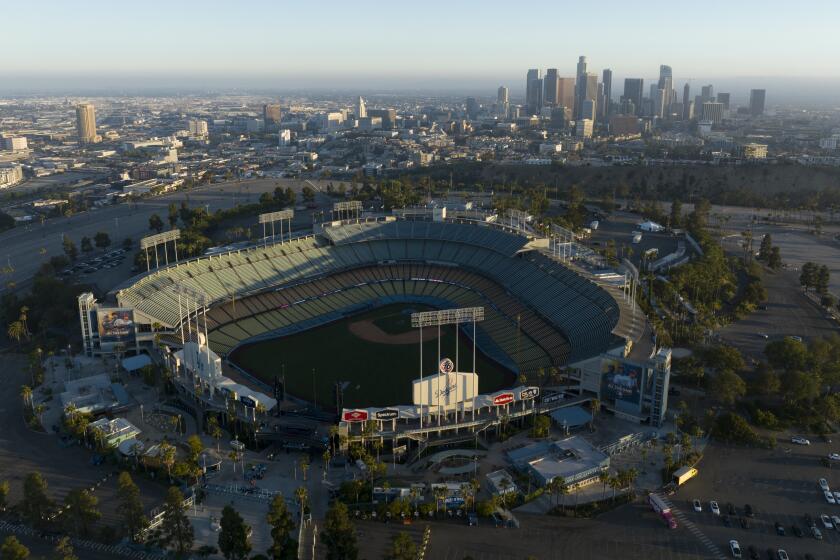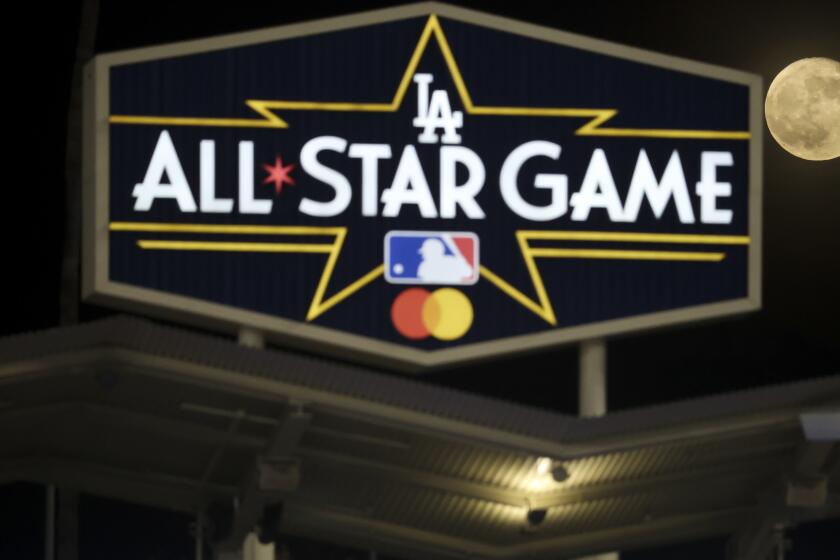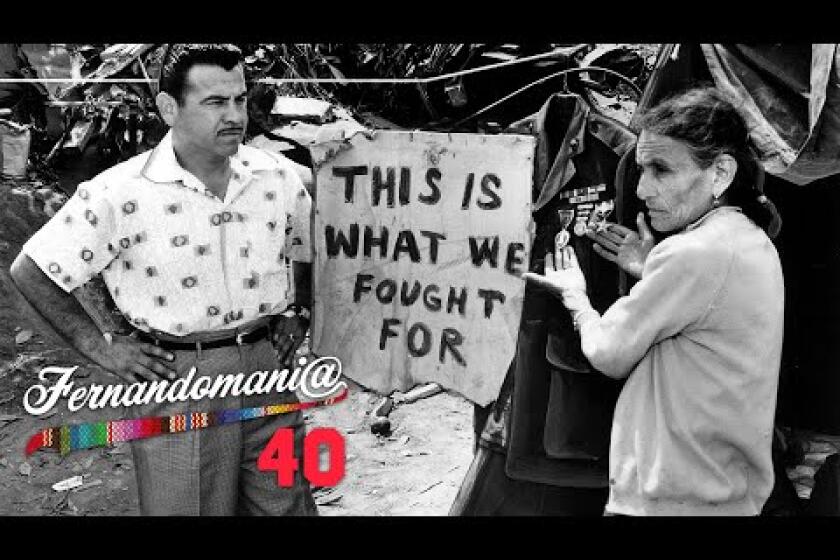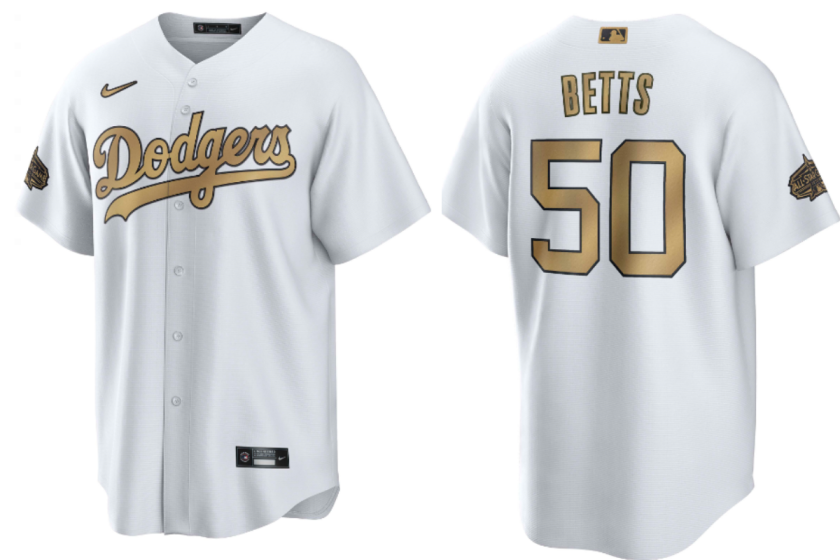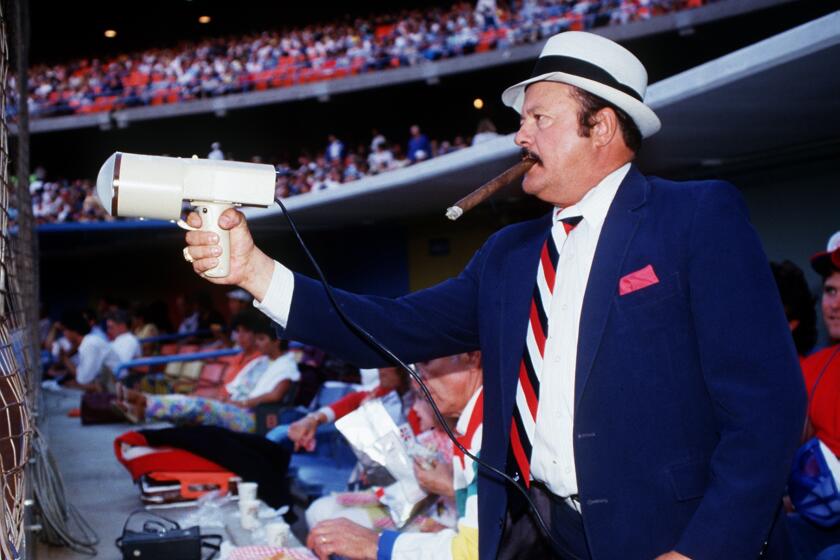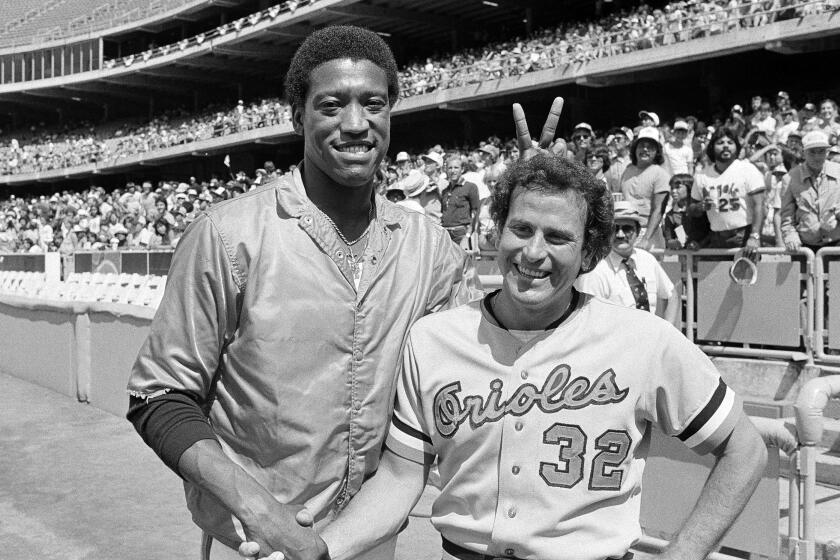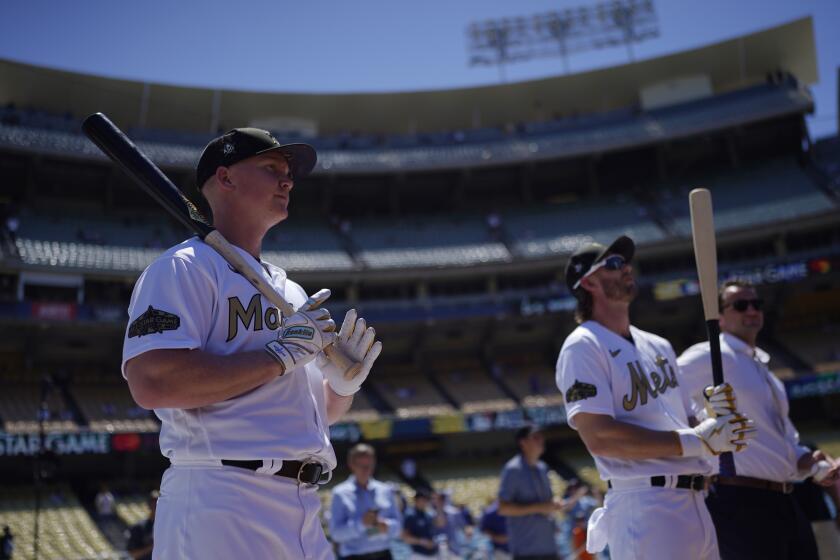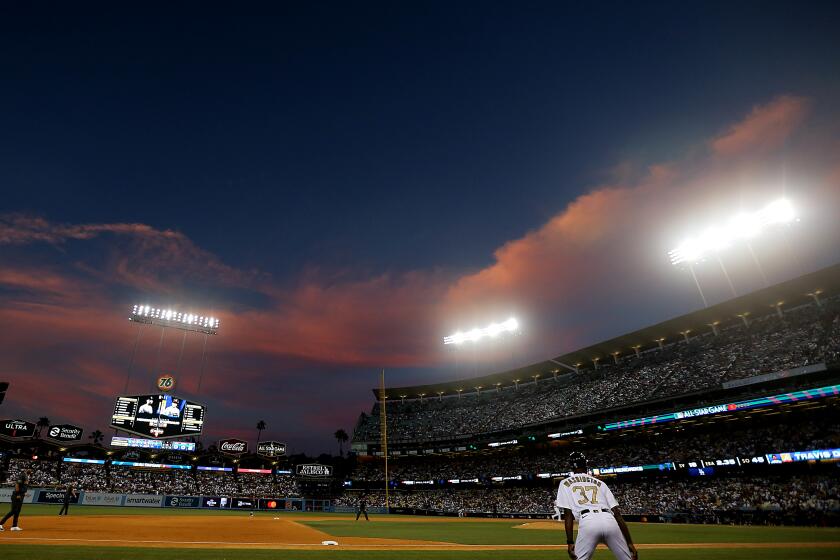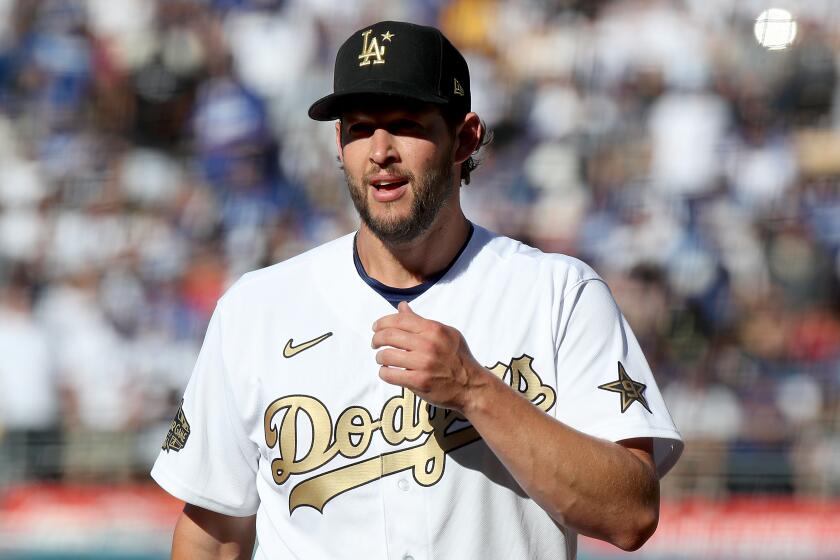Column: Attending a game at marvelous Dodger Stadium is a maddening experience

In honor of Dodger Stadium turning 60 years old, we asked Janet Marie Smith, Dodger executive vice president of planning and development, to show us some of the lesser-known details about the stadium.
For one shining night it will be baseball’s national treasure, a temple filled with history and beauty and stars.
But what are they going to do about that filthy bathroom floor?
For four memorable hours, a national television audience will be constantly reminded how the league’s most uniquely remodeled monument sparkles with statues and exhibits and community.
But what happens when that concession stand runs out of relish and ketchup?
Truly, it’s really cool that for the first time in 42 years, Dodger Stadium is again hosting baseball’s All-Star Game.
But how on Earth are they going to prevent the gridlock?
The third-oldest stadium in baseball, Dodger Stadium remains one of the best. On Tuesday, it will host the All-Star Game for the first time since 1980.
While the rest of the country will surely watch Tuesday’s festivities in jealous awe — the pristine seats rising from the parklands of Chavez Ravine, the San Gabriel Mountains looming in the distance — the locals know a harsher truth.
Dodger Stadium is a distinctly wonderful place to watch a baseball game, but a most difficult place to attend a baseball game.
Dodger Stadium makes you work. It makes you sweat. It brings you stress. It drives you nuts.
Once you are there, in your seat, watching baseball’s most consistently great product play a baseball game, it’s heaven. But everything else about it can be hell.
“Going to the stadium used to be such a joy, now it’s just an effort, it’s almost drudgery,” said Drew Pomerance, a partial season ticket holder who said he has been to at least one game at Dodger Stadium every year since 1963. “The seats are great, the play is great, but the fan experience is minor league.”
Like many fans over the years, Pomerance reached out to this columnist about a recent trip to Dodger Stadium that became a perfect storm of discomfort and disappointment. But while most of those fans are generally reluctant to elaborate on the record because they feel the team is playing too well to complain, Pomerance was willing to tell his story because he believes several disparate things can be true.
The MLB All-Star Game returned to Dodger Stadium for the first time since 1980 on Tuesday. Here’s our coverage:
You can love going to the games yet hate going to the games. You can love the product yet hate the delivery of the product. You can be a die-hard Dodgers fan yet acknowledge that it gets a little harder every time you go to Dodger Stadium.
“I love this team, and all those things they’ve done to the stadium are great,” said Pomerance, 65, a lawyer from Tarzana. “But it’s a real hassle to get into your seats and take a breath and relax.”
His saga occurred June 30, a Thursday night, the opener of a four-game series against the San Diego Padres. It is one of nine games he buys with a group, four tickets per game, Loge level, aisle 120, Row B.
Driving in from Tarzana with his wife, Pauline, he decided to leave at 5:30 p.m. for the 7:10 start so they could beat the crowd and wander around the various eateries in the renovated outfield plaza. The plan was working great when they exited the 5 Freeway at Stadium Way at 6:10 p.m., just a short trek from the entrance at Vin Scully Avenue.
But once they left the freeway, traffic was at a complete stop, and it took them an hour to travel what should have taken 10 minutes.
A 2020 book examines the lives forever changed by the building of Dodger Stadium, which would be brought back into focus with the rise of Fernando Valenzuela.
“Traffic was just stopped, everybody jammed together even though there were wide-open lanes going the other direction,” Pomerance said. “It’s crazy that they can’t use cones and fix the traffic flow.”
Once they entered the parking lot — a slower and painstaking exercise for many since all passes became digital — Pomerance drove to Lot L, for which he had purchased a spot for $50.
But there was no spot. There was no room. The lot was full and even an expensive parking pass couldn’t create space.
“I drove over to the attendant and asked, what should I do?” he recalled. “The attendant said they were sold out. How could they be sold out? I had a pass!”
Pomerance finally pulled in front of a guard rail and parked. It wasn’t a space. He spent the entire game worried he would be towed. He had no choice.
“There was nowhere to park, so my $50 parking pass was a complete rip-off,” he said.
And his evening was just getting started.
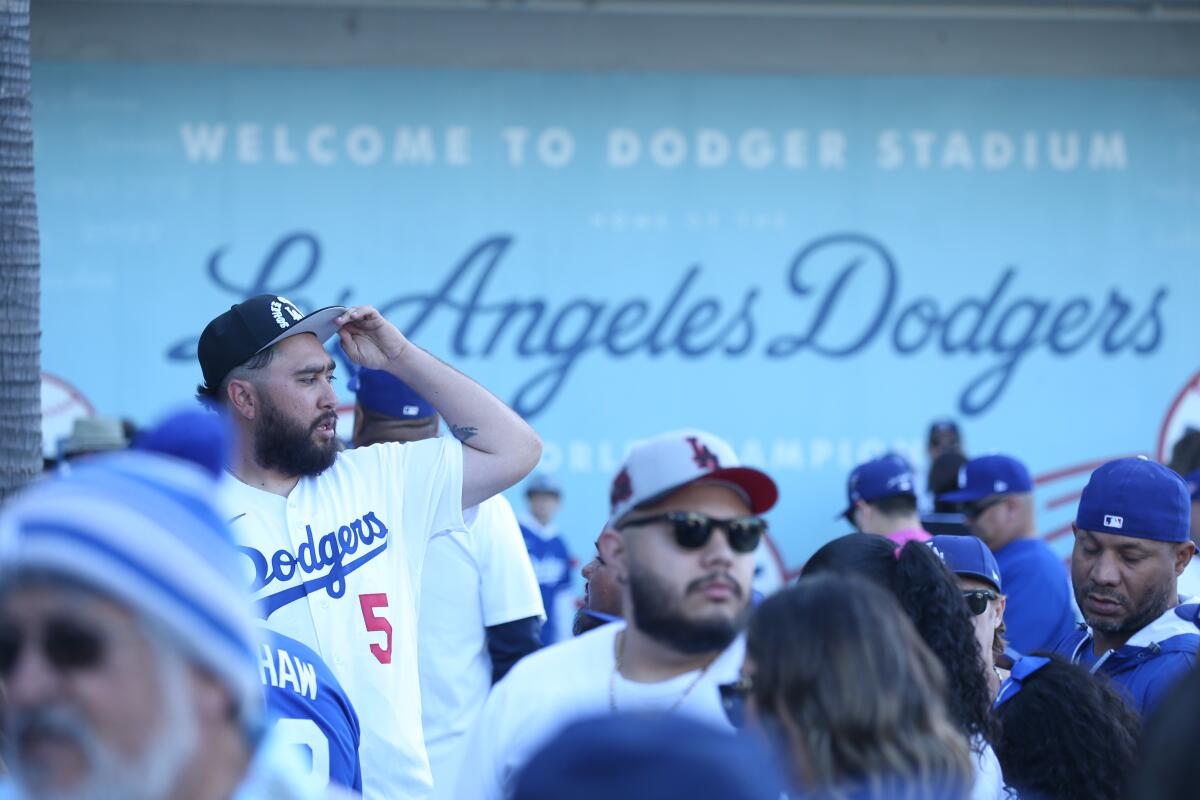
By the time he and his wife had entered the stadium, they had already missed the first pitch. They hurried to their aisle but, before walking down to their seats, he excused himself to use the bathroom.
Another ordeal.
Pomerance walked into a scene that too many Dodgers fans experience — a soiled and littered bathroom with no soap in the dispenser, no paper towels, and used wet paper all over the floor.
“The bathroom was already totally trashed out, and it was only the first inning,” he said. “I can’t imagine what it looked like later.”
He eventually found his seat and proceeded to sit back and enjoy a compelling and entertaining game. That is, until he left his seat again in the top of the third inning to buy a hot dog.
Strike three.
No, he didn’t have to endure the usual long concession lines. He was, instead, irked by something seemingly much smaller but equally as important, the sort of minute detail that the analytics-driven baseball team incorporates on the field but has apparently forgotten in the stands.
After Pomerance bought his hot dog, he couldn’t find a simple packet of relish and there was no ketchup in the dispenser. They were apparently out of both. All that was left was the multicolored messy remains. And it was only the third inning.
“The condiments stand looked like somebody had dropped a bomb on it,” he said. “It was a small thing, but those things matter.”
Nike and MLB unveil (and put on sale) the 2022 All-Star uniforms. The league jerseys are gone, and each player will wear a jersey with his team name.
After enjoying a Dodgers victory, Pomerance and his wife were soon reminded about the perils of being a good fan and staying for the entire game. It took them 40 minutes to get out of the parking lot.
“People walking everywhere, between cars, in front of cars, totally disorganized, chaotic, no flow,” he said. “They could fix it if they put in walkways. I just don’t understand why they won’t fix it.”
By the time Pomerance returned home, he felt like he had been the one playing nine innings.
“I was exhausted, I was frustrated and I said to my wife, ‘I don’t think this is worth it anymore,’” he said.
This is a man who was 6 when he first saw Sandy Koufax pitch and later sent him newspaper clippings that Koufax autographed and returned. This is a man who wore Wes Parker’s No. 28 in youth league, a man who used to hang out with high school buddies in the left-field pavilion, a man who was at Dodger Stadium for the 1981 and 2017 World Series, for the 1988 National League Championship Series, for every great sports memory of a life spent loving blue.
“I’m a die-hard Lakers fan, a big Rams fan, but there’s something about the Dodgers that holds a historical connection to the community, something iconic, it makes me emotional,” he said.
But he’s also a man now paying $118 per seat for tickets, parking and access to the Stadium Club. And for the first time, he’s wondering if it’s worth it.
“I haven’t made a decision for next year,” Pomerance said. “Every game for me this year has had some kind of hassle, some kind of parking, traffic or food disaster ... or the perfect storm of all of them.”
Legendary Dodgers scout Mike Brito, who died Thursday at 87, turned scouting into performance art, standing behind home plate and charting pitches.
Pomerance said he complains to his daughter Alexandra, 33, but her response probably mirrors that of many of the fans who buy nearly 4 million tickets a year for a team that has led the league in attendance for eight consecutive years.
“She’s like, ‘That’s just how it is, Dad,’” he said. “People expect the hassles because it’s all they’ve known.”
That’s just how it is…
But does it really have to be that way? Shouldn’t Dodgers fans demand more for their blind loyalty? Shouldn’t the Dodgers work even harder to repay that loyalty?
When contacted for this column, Dodgers officials declined to comment, but their stance on all these issues has been often stated and is well known.
They say they can’t fix the ancient freeways that surround Chavez Ravine, and there’s only so much they can do with parking lots that stack up because of limited access to those freeways. They also note that increased public transportation is one of the only real solutions, but fewer people are taking public transportation because of COVID.
As for the stadium maintenance and concession workers, the Dodgers have long claimed they are not understaffed and that it simply takes time to service the needs of 53,000 fans. The union representing the stadium concession workers threatened a strike this week and talks are ongoing between the union and its employer, Levy Restaurants.
“No matter what they say, you wonder how much they really care, because they will fill the place with three-and-a-half million people every summer no matter what they do,” said Pomerance. “You give up your tickets, there are 10 people in line to take your place.”
Steve Stone and J.R. Richard were the starting pitchers in the 1980 All-Star Game at Dodger Stadium. By the end of the 1981 season, their careers were over.
Despite this increased lack of faith, Pomerance sent the Dodgers an email detailing his bad night, and the Dodgers responded, apologizing for his disappointment and providing him with hotlines to phone or text if he’s having concession or restroom cleanliness issues.
“That was nice but, I mean, I’m not going to take the time to call someone when I’m trying to dry my hands,” he said. “Not once in their response did they express worry about losing me as a ticket holder, and that bothered me.”
That’s because they’re not worried. Not as long as the team is winning and fans are roaring and history is happening.
Face it. Since Guggenheim bought the team and Andrew Friedman saved the team and eight straight West Division championships defined the team, most of you love the Dodgers more than you hate the stadium experience.
You’ll endure because you enjoy. You’ll accept the loss of comfort for the winning on the field. Dodger Stadium will make you work, but it’s a job you’ll gladly accept.
For now.
“You have to think at some point people are going to throw up their hands and say it’s easier to sit at home and watch on TV, they’re still just as great,” said Pomerance.
At some point.
Just keep winning, baby.
More to Read
Are you a true-blue fan?
Get our Dodgers Dugout newsletter for insights, news and much more.
You may occasionally receive promotional content from the Los Angeles Times.

